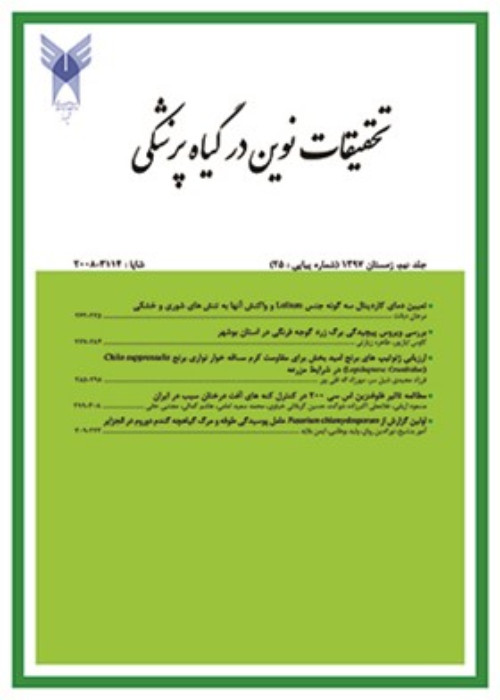Study of population dynamics of oak tortrix moth (Tortrix viridana) and its natural enemies in Fars province
Abstract:
Tortrix viridana is a serious pest of oaks in the Kamfirooz oak forests.Oak bud tortricid (Tortrix viridana) has five larval instars in Kamfirooz oak forests. The pest overwinters as diaposed eggs. The first larval instar emergence coincides with tree budburst when they enter bud scales. First instar larvae appear between 10th to late march, depending on weather condition. Weather parameters such as low temperature at the time of egg hatching determine losses of the pest to the host tree. First, second, third, fourth and fifth instars of the pest take 4-7, 5-8, 5-8, 6-12 and 7-14 days respectively. Pest larvae make their feeding sites by attaching leaves in clusters through webbing. Larvae suspend themselves from a fine silken thread until they find a suitable feeding site and when there is a crowd of larvae on the some branches of the trees, larval movement between trees through hanging can be facilitated by wind. Many predators including spiders, ants, beetles and occasionally birds feed on pest larvae. The pest finishes its larval stages between 26 and 47 days (with an average 31.5 days). Pupal stage lasts 1-2 weeks. Trees can offset pest damages after pest outbreak, provided rainy winter precede, but if pest outbreak occurs in a year with low precipitation followed by a dry and hot summer, high losses due to pest will be unavoidable. Egg, larva, pupa and adult temporal distribution frequencies were 72.61, 10.14, 2.73, and 14.52 percent respectively. Direction had no significant effect on pest damage. Pest moths emerge during late April up through mid may. Moth population reaches its peak within 2-3 weeks after its appearance, and gradually disappears after its unimodal peak. Swarming as a social phenomenon may be observed during the emergence of adults. Twenty species of Aranidae belong to more than 7 families including Lycacidae, Oplinoidae, Clubionidae, Araneidae, Ulobridae, Phomicidae, Salticidae, four species of Coleoptera including Tenebrionidae (one unidentified species) and three coccinellids (Coccinellidae) as well as four species of Hymenoptera were among frequently collected natural enemies of the pest. Population dynamics of Exochomus quadripustulatus, one of the important coccinellids was also studied in sampling plots.
Keywords:
Language:
Persian
Published:
Journal of Novel Researches on Plant Protection, Volume:5 Issue: 1, 2014
Pages:
1 to 12
https://magiran.com/p1338281


